Functional fitness – movement for better ageing
Functional fitness focuses on movements that build your strength, stamina and mobility and help you perform real-life, day-to-day activities. It’s a simple and effective way to move more, feel stronger and help your body age better.
What is functional fitness?
Functional fitness involves movements that help your body lift things, push and pull, squat down and get back up again, twist and balance. It helps with coordination and flexibility, and works to target your whole body rather than just one or two muscle groups.
What are the benefits of functional fitness?
The main benefit of functional fitness is that it helps your body cope with the demands of daily life, which is particularly important as we get older. Activities that once felt easy – like bending down to get dressed or carrying heavy bags of shopping – can get more difficult as we age.
More generally, functional fitness helps to build mobility, stability, strength and balance, which can help us prevent injuries, age well and stay independent for longer.
Is functional fitness safe for older people?
Yes, functional fitness can be a great choice for people of all ages. You can adapt movements to suit your needs and abilities and move at your own pace. As with any kind of physical activity, it’s best to start slowly and build up as you feel stronger. And if you have any ongoing health conditions, injuries or concerns, it’s a good idea to speak to a healthcare professional before starting.
Do I need any equipment?
No, you don’t need any special equipment, making functional fitness movements great to incorporate into your normal day. And there are no costs attached! You can do functional fitness moves at home and even use your furniture to help you do them.
Functional fitness exercises to try yourself
These moves can help with independence, fall prevention, and overall resilience as we age.
Sit-to-Stand (Squats)
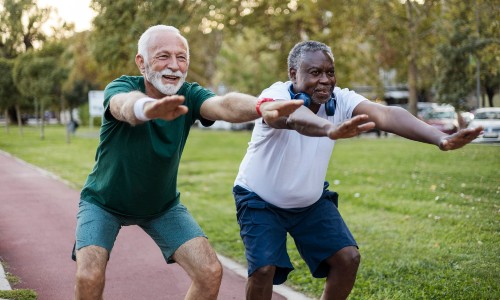
Why? Builds leg strength for getting up from chairs, climbing stairs, and maintaining mobility.
How? Stand up from a chair without using hands, lower slowly, and repeat 10-15 times.
Step-Ups
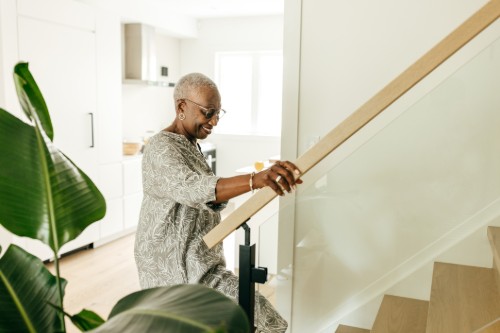
Why? Improves balance, coordination, and lower-body strength for stairs and curbs.
How? Step up onto a stair or sturdy platform, then step down. Repeat 10 times per leg.
Wall Push-Ups
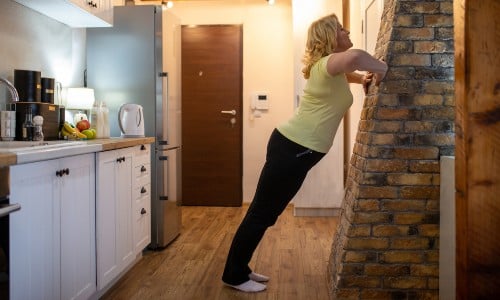
Why? Strengthens the upper body for pushing movements (e.g. opening doors, getting up from the floor).
How? Place your hands on a wall, lower your chest towards it, then push back up. Repeat 10-15 times.
Heel Raises (Calf Raises)
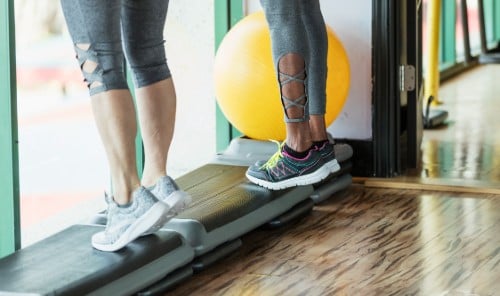
Why? Improves balance and strengthens your lower legs to prevent falls.
How? Stand tall, rise onto your tiptoes, then lower down slowly. Repeat 10-15 times. Hold onto a chair if needed.
Single-Leg Balance
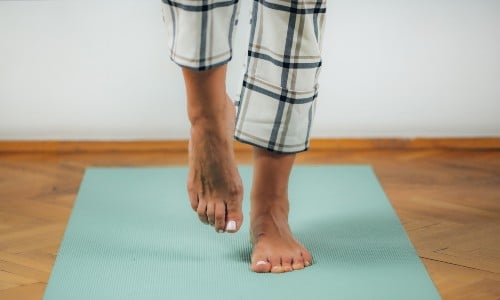
Why? Enhances balance and stability to prevent falls.
How? Stand on one leg for 30 seconds, then switch sides. Make it harder by closing your eyes or standing on a cushion.
Glute Bridge
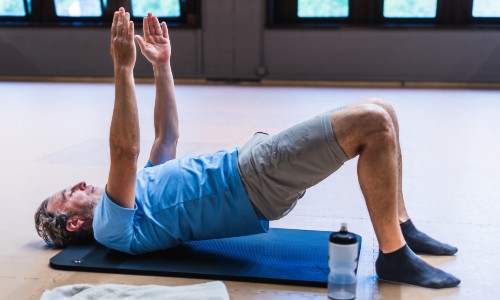
Why? Strengthens the glutes (the large muscles in your bottom) and core (the muscles in your trunk), preventing lower back pain.
How? Lie on your back, feet flat, lift your hips up, squeeze your bottom muscles, and lower slowly. Repeat 10-15 times.
Dead Bug (Core Stability)
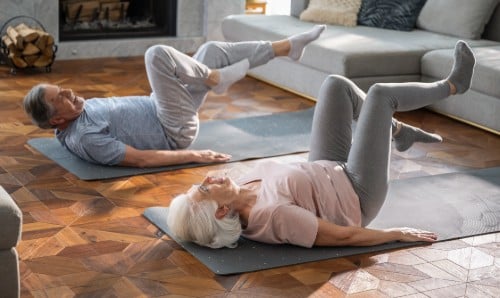
Why? Engages deep core muscles for posture and injury prevention.
How? Lie on your back with your arms and legs up, lower your opposite arm and leg slowly. Repeat 10 times per side.
Carrying and Grip Strength (Farmer’s Carry)

Why? Essential for everyday tasks like carrying shopping or lifting objects.
How? Hold a heavy object in one hand, walk 10-20 steps, switch hands.
Act Now, Age Better
Download our free leaflet, written by Dr Hussain Al-Zubaidi, for more information to help you move more for a better later life.

